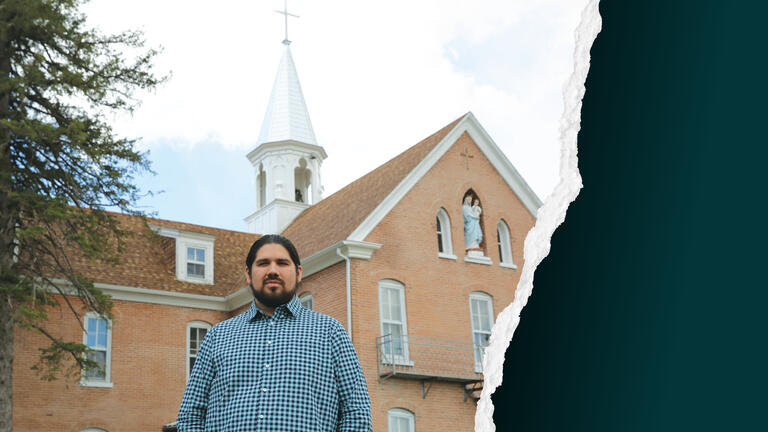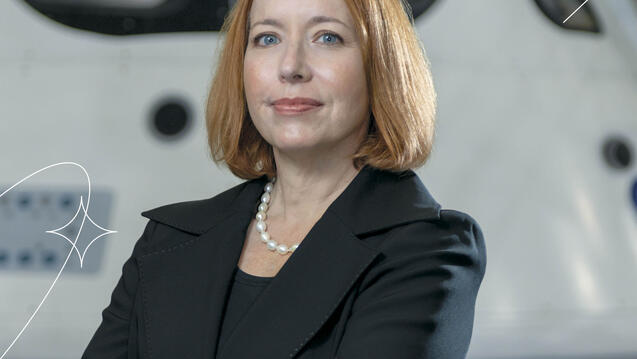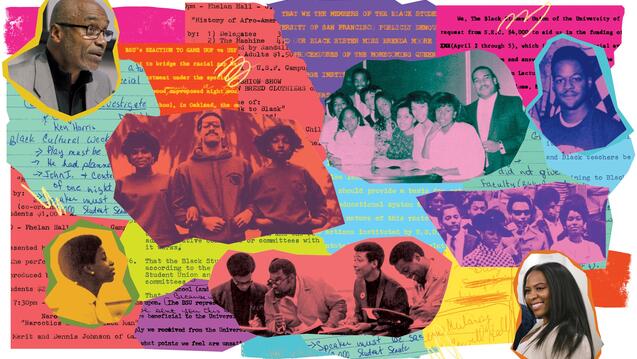

Where There Was Darkness, Light
When Pope Francis made his “penitential pilgrimage” to Alberta last July and begged forgiveness from Indigenous Canadians for the Catholic Church’s involvement in child abuse at boarding schools, he wasn’t only speaking about Canada.
More than 400 such schools operated for over 150 years in the United States, from 1869 through the 1960s. The schools played a large role in eradicating Indigenous culture, tearing families apart, and inflicting trauma that would be passed down through generations.
“I believe the Pope's apology represented a major step forward for the Catholic Church,” says Maka Black Elk ’10. “It marks a beginning for many Catholics to commit to this work of truth and healing. The church has much further to go.”
Black Elk is well qualified to evaluate contrition. He is the executive director of truth and healing at Red Cloud Indian School in South Dakota, once a Jesuit-run boarding school and now a Jesuit/Lakota institution. With his help, survivors and their families confront the past and look toward the future.
A Foot in Both Worlds
Black Elk brings to his work an understanding of both Catholic and Lakota traditions. “Both have nourished me and sustained me in my faith to the creator and to our world,” he says.
In high school at Red Cloud, Black Elk received a traditional Jesuit education. But he held fast to his Lakota heritage.
“I will always remember as a child the days we would spend at Devil's Tower, what we call Matȟo Thipila or Bear's Lodge, in Wyoming,” he says. “I would watch my father lead the Sun Dance and see his devotion and sacrifice.”

When it came time to apply to colleges, he had his heart set on attending a Jesuit university. Having visited San Francisco as a child and finding it “magical,” the choice was made for him when he was accepted to USF.
“I had no clue what I was doing. I had never even visited USF’s campus before my mom and I drove from South Dakota to San Francisco.”
Black Elk, a performing arts and social justice major, spent the 2008 spring semester studying at Sophia University, a Jesuit school in Tokyo, while on a USF study abroad program. While there, he met up with a friend of his mother’s, a professor of American studies. She invited him to tag along to the Indigenous People’s Summit being held in Hokkaido.
“For the first time, I was in a room with Indigenous people from all over the world, hearing languages and learning about cultures I had no idea even existed,” he says. “One of the translators spoke 16 languages. I was blown away by a sense of connection I’d never felt.”
Black Elk returned to USF and switched his major to international studies.
“I knew I’d landed where I was supposed to be,” he says. “Every lesson made immediate sense. I could apply what I learned right away to two things: what I’d learned at the conference in Hokkaido, and what I could do with my life after I graduated.”
Black Elk went on to earn a master’s degree in international educational development from Columbia University, focusing on peace education. Professor Monisha Bajaj, now of USF’s International and Multicultural Education program, had him in two of her classes when she taught at Columbia.
“I am certain that his critical inquiry skills were honed and enhanced by his time at USF — he was one of the strongest master’s students I have worked with in my nearly two decades as a professor,” Bajaj says. “I recall him being extremely reflective, insightful, and committed to fusing ideas and theories from around the globe with his deep passion and commitment to his community.”
After graduation in 2013, Black Elk returned to South Dakota and accepted a position at Red Cloud. He taught social studies and Lakota history to high school students.
“I loved teaching — it felt powerful to be a Lakota teacher teaching Lakota history to Lakota students, and especially to be a Lakota teacher teaching general social studies,” Black Elk says. “I felt a deep responsibility to my students to show them that you can be Indigenous and still pursue any career path you want, not just grab the first job opening available on the reservation.”
Truth and Healing
In 2019, a new era began at Red Cloud. Ray Nadolny, the school’s new and first non-Jesuit president, went into the Lakota community and asked about people’s perception of Red Cloud.
“President Nadolny discovered that there was a lot of latent anger about Red Cloud’s history as a boarding school. Parents were resentful that they had no choice but to send their kids to the place that had hurt them,” Black Elk says.
In many cases, the hurt spanned generations. Red Cloud, known as Holy Rosary Mission school until 1969, operated under the federal Indian Boarding School Policy, which mandated that school-age children live and learn in a government-approved school for at least 10 months each year. Students were not allowed to speak in their native languages. Punishment included beatings. Disease was rampant and increased the already high death toll of students each year.
To explore Red Cloud’s history, Nadolny established a committee consisting of Black Elk, Fr. Brad Held, S.J., the reservation’s pastor, and several other employees. The committee spent a year researching the school’s history and learning about methods of reconciliation.
“It was a privilege to be alongside (Black Elk) in this important work of seeking to openly and humbly address the tragic injustices of our past,” says Held. At the end of the year, Red Cloud created a full-time position to pursue truth and healing. Black Elk applied for it and was hired.
In the role, he follows a four-step healing process laid out by Maria Yellow Horse Brave Heart, the creator of a model of historical trauma for the Lakota people.
“This is not a job that has a daily routine. It’s responsive and dynamic,” Black Elk says. A typical week can include meeting with community members, school executives, and counterparts at similar schools, along with planning and executing events like community dialogues, listening sessions, and talking circles, held among school staff, leadership, and former boarders. All of it serves to facilitate the healing process created by Brave Heart.
The first step of the process is confrontation, in which wrongdoings are admitted, archives and records are released, and platforms are provided for survivors and descendants to share their stories in order for those stories to be heard by all.
Next comes understanding, when survivors, boarders, and their descendants process trauma and recognize how to place it in both general and personal history, alongside those who inherit the perpetrators’ legacies. The third step is healing, and its goal is to have survivors, boarders, and their descendants work with their community to determine methods to overcome traumas — keeping in mind that healing is always a personal journey.
Finally, there is transformation, from which survivors, boarders, and their descendants ideally emerge from healing and form new relationships — with the past, with themselves, and with their community.
“It’s important to recognize that this work is not static,” Black Elk says. “Transformation is never finished. The goal is not to finish the steps and be done; it is to work through trauma. ‘Transcendence’ might be a better word. This role really is the culmination of everything I’ve studied: human rights, indigenous rights, peacekeeping. Truth and healing is all about peacekeeping.”


